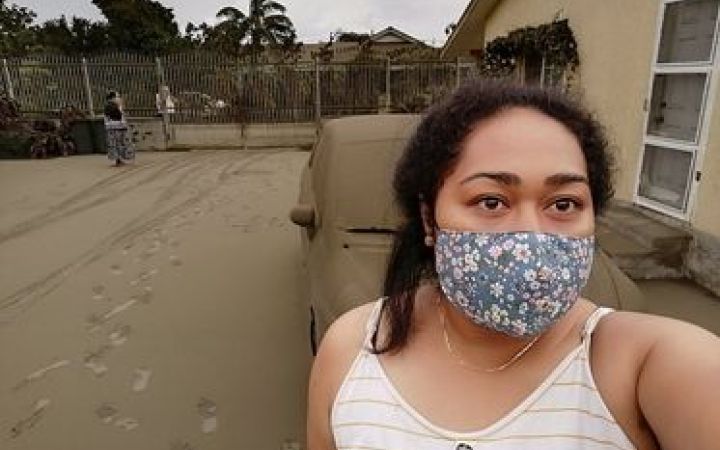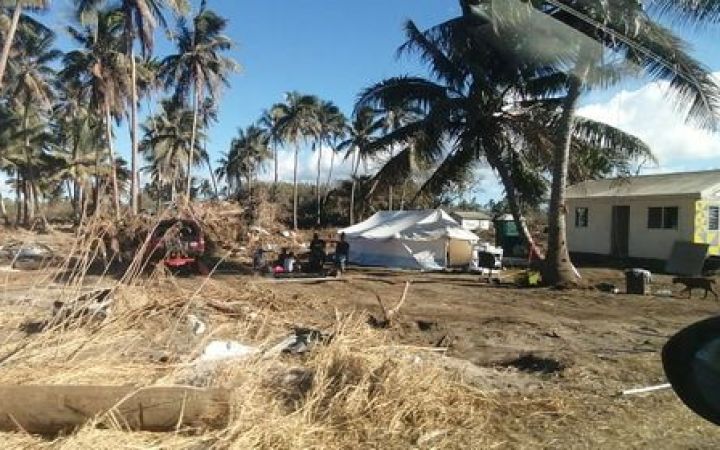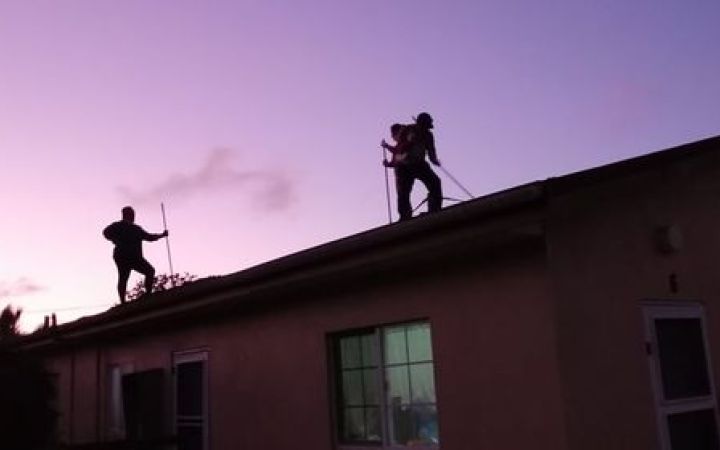- Mele Moimoi is a disaster risk reduction trainer at Tonga National Council of Churches (TNCC).
- Her preparedness habits and knowledge about disaster risk reduction helped her in the 2022 Tonga disaster.
- Mele learned about gender leadership in disasters at the 2021 UNITAR Hiroshima Women’s Leadership in Tsunami-based Disaster Risk Reduction (DRR) Training Programme.
- Tongan women take care of the family while men work far from home. Women need to know how to respond to disasters and lead in crises.
April 2022 - The volcanic eruption and subsequent tsunami that hit Tonga in early 2022 is a stark reminder of the reality of disasters and the fact that a disaster, can hit anywhere at any time and render communities vulnerable to massive damages.
For Mele Moimoi, 15 January 2022 was just another beautiful day in Tonga. Her schedule included an afternoon appointment at her local salon for a pampering session. But at 5 p.m., the Hunga Tonga–Hunga Ha'apai underseas volcano erupted.
Mele was lying on the treatment bed when she first felt the tremor. For a minute, she and the staff thought it was caused by movement in the building, but the shaking intensified. And then Mele heard a huge blast that made her feel as if her ears had popped. Right away, she was up to find out what had happened.
Mele says she was quick to react thanks to her professional work. She is a senior project officer at Tonga National Council of Churches that runs a community disaster risk reduction programme. The NGO trains the community on what to do in case of a disaster because Tonga is at risk of disasters: Tonga is vulnerable to the effects of climate change and volcanic activity.
Action! From Disaster Preparedness to Response
When the volcano erupted, people were running around in panic while others were trying to understand what had just happened. It was easy to get disoriented, given the panic, commotion and air full of hot ash. Some people were snapping pictures and recording videos on their mobile phones – they seemed more interested in capturing a “kodak moment” rather than evacuating to safety.
Mele yelled and pulled people along, urging them to seek safety. Her trainer instincts kicked in as she remembered the disaster management lessons she had taught so many times, and she calmly gave instructions to whoever cared to listen.
When Mele and her sister managed to get into their car and set off for home, the roads were jammed with traffic and pedestrians moving in all directions. After four long hours – instead of the usual 30 minutes – they finally arrived home and found their mother and some neighbours there.
Mele assured them that they were safer there because their houses were on higher ground. She advised them to keep calm and stay put for the night; they would assess the situation in the morning and decide what to do next.
Mele reckons that her preparedness habits and knowledge about disaster risk reduction was critical to their survival that evening. For one, she had her 72-hour emergency bag stocked and ready to serve their needs through the night. The bag contained water, food, medical supplies, flashlights, light blankets, matches, and candles. She gave her family tips on the dos and don'ts, including avoiding unnecessary movement to keep cooler.
The next morning, Mele and her family were able to see the impact of the volcanic eruption. Houses, powerlines, water systems and communications lines were all damaged. Somehow radio was restored, and this was their sole means to receive updates on what had happened and was being done by the government.
Drawing on Lessons from Disaster Risk Reduction
In retrospect, Mele is grateful for the experience and lessons from this disaster and notes that her trainer experience played a huge role in ensuring she and her family stayed safe. The additional training she got from the 2021 Women’s Leadership in Tsunami-based Disaster Risk Reduction (DRR) Training Programme not only reinforced what she already knew, but it opened her eyes to new concepts which became evident in this disaster and which she plans to incorporate into her future trainings.
For example, gender. Mele witnessed how the women stepped up that day to ensure their children and relatives were safe. Most Tongan men work far from home, leaving the women in charge of the family. This reiterates the need to build the capacity of women so they can take leadership roles within the wider community, especially in times of crises.
Secondly, accurate data is key for planning any response. She hopes the government will be able to use disaggregated data to better inform policies and plans and make them more responsive to the needs of the community in a crisis. Tools such as Google maps could help planners more accurately map each area, village, and household. This kind of detail could help the government and communities prioritize action based, for example, on the level of damage or number of people who are at higher risk or need special help in a given area.
Mele also notes the importance of sharing stories and post-trauma therapy. People need to talk about their experiences and share their thoughts and feelings, whether in private or in public. Stories can be a powerful tool to educate, unify and heal.
Mele believes that their communal culture is undoubtedly the Tongans’ greatest asset. It has always helped them through tough times, including the recent disaster. The government and external players stepped in to help but arrived a few days later – and those few days could mean life or death in an emergency.
Tongans are taught to look out for each other and to share anything and everything with everyone, both in times of plenty and in times of scarcity. This caring and sharing cements our sense of family and community, as much as it builds our resilience. —Mele Moimoi, Tonga
The Hunga Tonga–Hunga Ha‘apai undersea volcano is about 65 kilometres north of the main island of Nuku‘alofa. It erupted on 15 January 2022, spewing a mix of ash, gas, and steam. The eruption left Tonga covered in thick volcanic ash and also triggered a tsunami, inflicting massive damage to the island nation.
According to the United Nations, the eruption affected an estimated 80 per cent of the population. Many residents lost their homes and suffered the effects of inhaling hot air, ash and gas fumes. Infrastructure was damaged and the agricultural and fishing sectors are threatened with contaminated water and potential acid rain.
UNITAR Division for Prosperity with the support of the Government of Japan helps women leaders from small island states strategize better to reduce disaster risks in their countries and communities since 2016.




